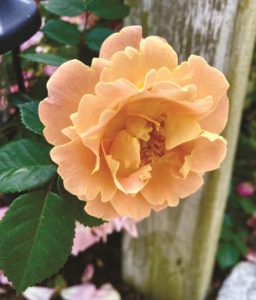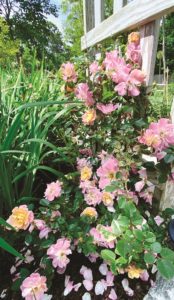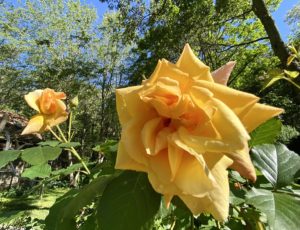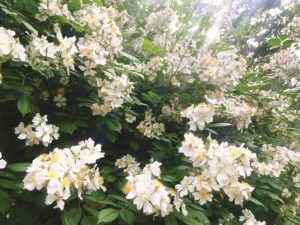For a long time, I held a resentment against roses. I liked to see them, but I wouldn’t plant them. I didn’t want them in my garden. They are too fussy, I told myself. They are plagued by fungus. They get out of control. They make me bleed every time I’m near them.

The thing was, I didn’t really know how to properly care for them. I simply didn’t understand them. They were a weak point in my gardening knowledge, and I put that on them. In my ignorance, I rejected them.
Roses are beautiful. They are tough. And they need care, as all meaningful things do.
My heart has opened to roses again. They won me over with their persistence.
Roses are a vast and endless world within horticulture and gardening. One could be a cultivator of roses for a lifetime and there would still be mysteries and new varieties to find and create.

There are about 300 species of roses and thousands of varieties within those. Three main categories are used to classify roses: old garden or antique roses; modern roses; and wild or species roses. Old garden roses are those that existed in cultivation before 1867, the year the first hybrid tea rose was introduced. All varieties developed after that are modern roses. Wild roses are those that still range freely in the woods and fields of the world.
Old garden roses tend to be hardier, bloom less often, and have that mind-altering fragrance we so adore. They are the ones you are encouraged to stop and smell as a metaphor for appreciating life itself. The modern roses bloom vigorously and continuously throughout their growing seasons but tend to lack that depth of scent. Their altered genetics are more susceptible to pathogens and insects, too.

Caring for roses properly requires some effort, but they reward us well for our invested energy. Pruning is one of the main things roses need. Early spring — March and April — is the ideal time for pruning. And they respond well to it, so don’t be shy. This rule of thumb is helpful for those wanting guidance: stalks as thick as your thumb or larger are the most productive and should be kept. Anything smaller can be removed. Or think of it this way: roses need to be thinned of dead, weak, or crossing branches. You are opening the interior of the plant to airflow and light and creating a strong branch structure.
Keep some rubbing alcohol or hydrogen peroxide close by. You’ll use it to clean your pruners regularly as you go, to stop cross-contamination of pathogens. You can use it for yourself, too, when one of those perfectly shaped thorns tears your forearm.

Systemic fungicides and insecticides, often coupled with slow-release fertilizers, are important for keeping your roses protected and healthy. Neem oil is also a great treatment for foliar issues, and it leaves no residual toxicity for pollinators.
As I took the time to understand roses, my appreciation for them grew. I started noticing them more. I looked at their structures with new eyes. I valued their intricate and graceful flowers more deeply.
Last year, I put up an archway at my house. For a whole year, it stood naked while I thought about what to plant at its base. Should I grow a clematis on it? Maybe a climbing hydrangea? Something unusual like a kiwi or an akebia?
A climbing rose now covers the bottom half of the arch. I deadhead every Saturday. I feed her every two weeks. When a strong shoot reaches out, I gently tie it to the arch to help her climb higher. I stop and smell her flowers as I walk by.



